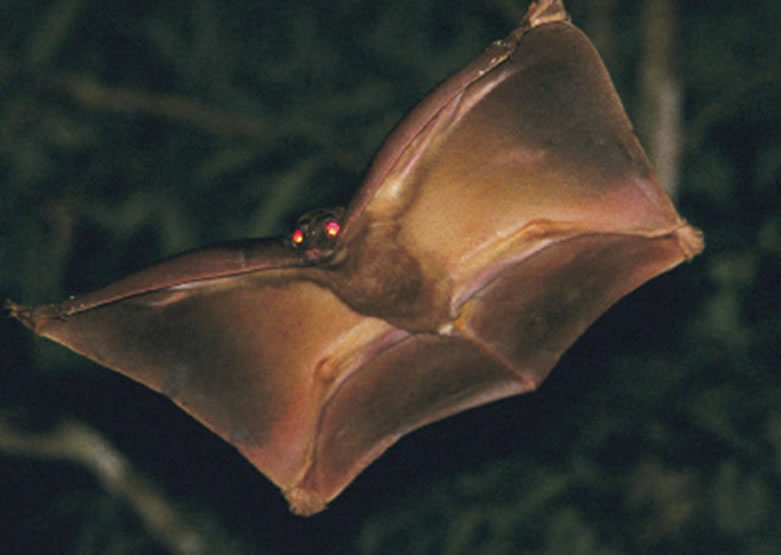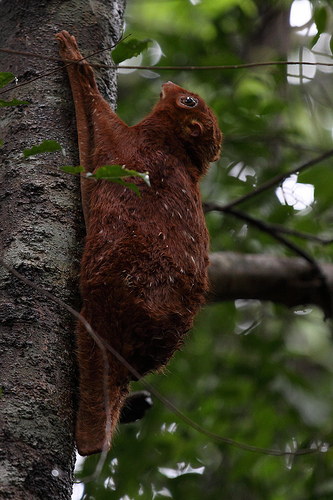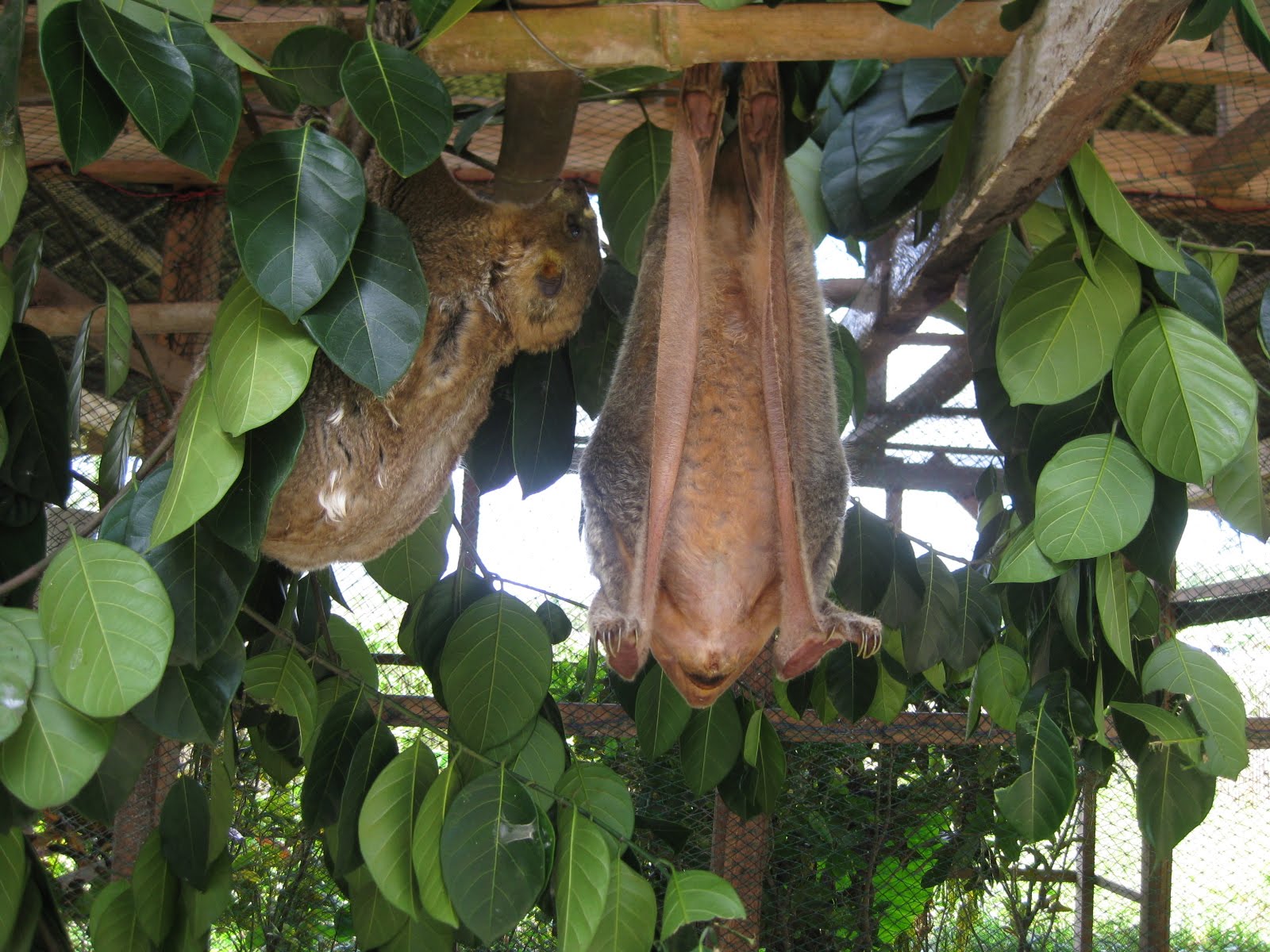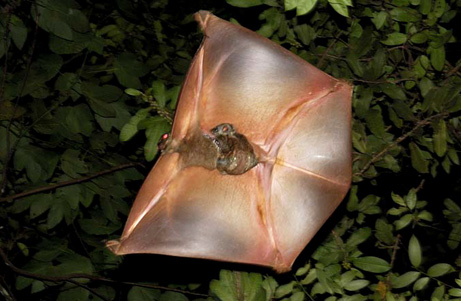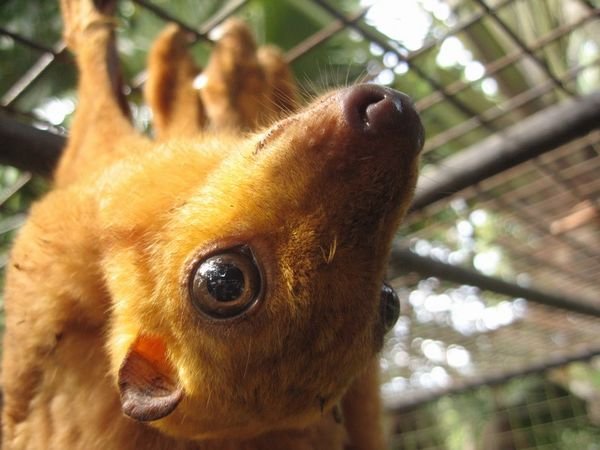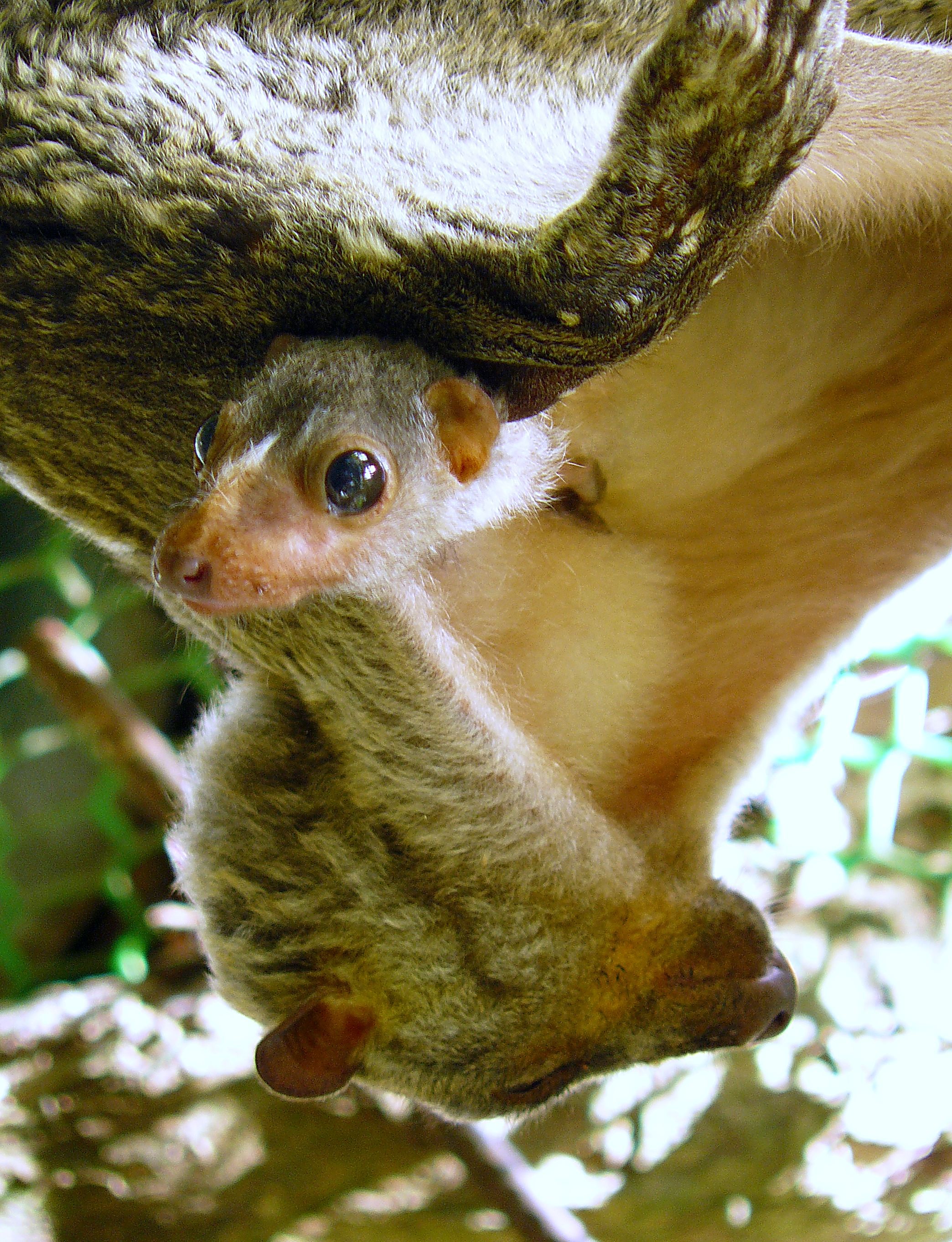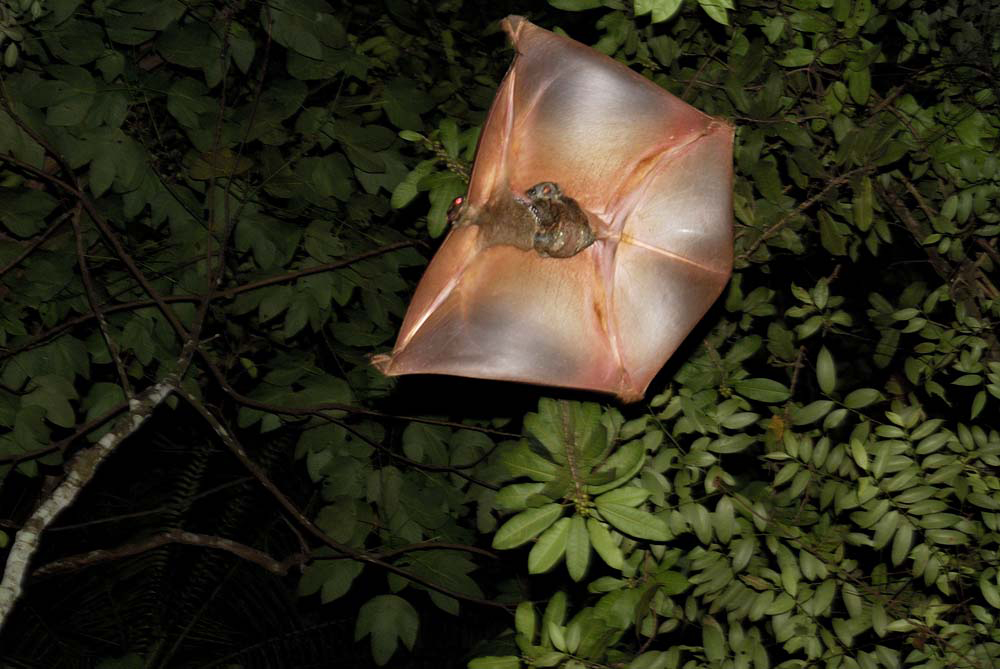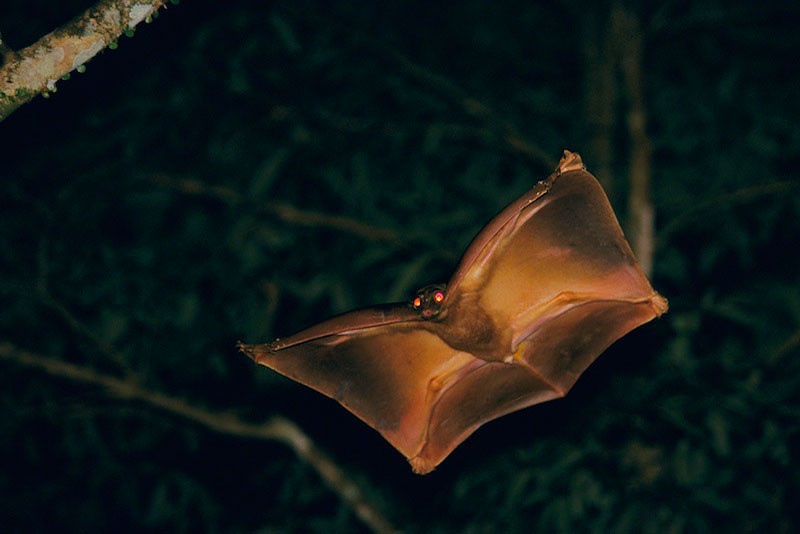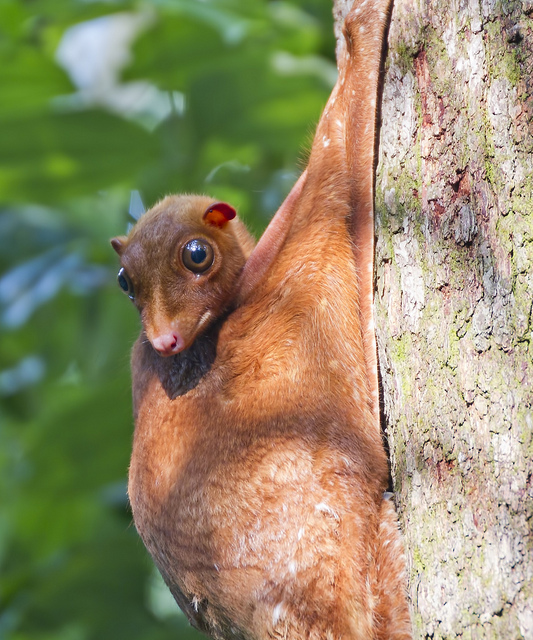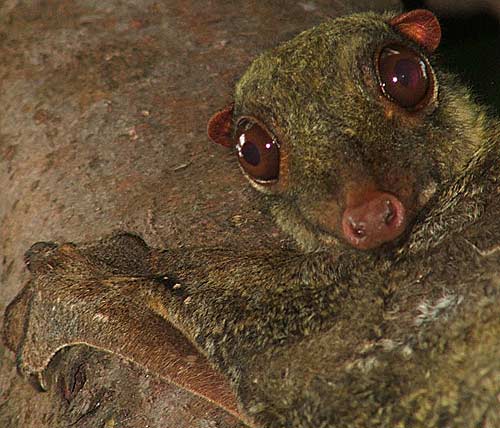Colugo: Amazing Asian Flying Lemur
The name “flying lemur,” or colugo, refers to two species — the Philippine flying lemur and the Sunda flying lemur; both species preferentially live in the humid rainforests of Southeast Asia. They are the only two surviving species within the family Cynocephalidae and the order Dermoptera.
These beautiful and rare flying lemurs are the Jerusalem artichokes of the animal kingdom: they aren’t lemurs, and they can’t fly.
Although technically the colugo cannot fly, they are the most adept mammalian gliders on earth. Their huge skin flaps — called patagium — extend from the shoulder blades to the fore paw, and from the hind legs to the tip of the tail.
Even the spaces between their fingers and toes are webbed for additional lift.
Colugo spend their days moving around in the branches of the forest, very rarely touching terra firma. An animal with that much skin as baggage would make a quick and easy snack for a ground-dwelling predator.
The colugo climb slowly, carefully, and unremarkably through the canopy, but when they decide to move between trees, their magic and splendour are revealed. The colugo can effortlessly glide 100 metres losing just 10 metres in height.
Philippine flying lemurs (Cynocephalus volans) live in primary forests whereas the more widely distributed Sunda flying lemur (Galeopterus variegatus) makes its home in secondary forests, rubber and coconut plantations, orchards, mangrove swamps, and gardens.
Colugo are vegetarians and can sometimes be found licking various plants to gather essential minerals, water, and salts.
As tree-dwelling mammals, flying lemurs are relatively large in size, reaching 35–40 cm in length as adults. Understandably, when the species was first described, they were considered a relative of the bat, but scientists have since shown them to be more closely related to primates.
A paper published in Science in 2007 seems to have settled a debate that has been roaring on for years, well below most people’s radars. Who is the closest relative of the human? Is it the order Demptera (flying lemurs), or Scandentia (Asian tree shrews). The question has been hotly contested for years.
Researchers looked at a 14-kilobase dataset from nineteen nuclear gene fragments from two genera of living colugos, three living tree shrews, and six living primates. The team from Texas got down to business. The authors concluded that the colugo is a closer relative to the primates than the poor old tree shrew.
The colugo are placental mammals, but have some marsupial traits; after birth, the young creature clings to its mother’s belly and is protected by the giant wing flaps in a pouch-like compartment for the first 6 months.
Very little is known about the colugo’s behaviour, living in trees and only moving at night has helped them evade researchers for years.
The Philippine flying lemur is considered near-threatened, predominantly due to deforestation. The lemurs make essential snacking for Philippine eagles which are gravely endangered themselves and soon to be extinct if things don’t change for the better.
The Philippine flying lemur is restricted to just one small patch of southern Philippine forest whereas the Sunda flying lemur is more widely distributed across Indonesia, Thailand, Malaysia, Brunei, Cambodia, Laos, and Singapore. Deforestation and the increase of rubber plantations do seem to be negatively affecting the Sunda, but not as badly as its Philippine cousin. Sunda are considered to be of “least concern” by the IUCN.
Here are some more pictures of these beautiful animals:
MORE AMAZING NATURE
CORDYCEPS: THE MOST BRUTAL FUNGUS
RED CRAB MIGRATION OF CHRISTMAS ISLAND
THE ANDEAN CONDOR’S HUGE WINGS

